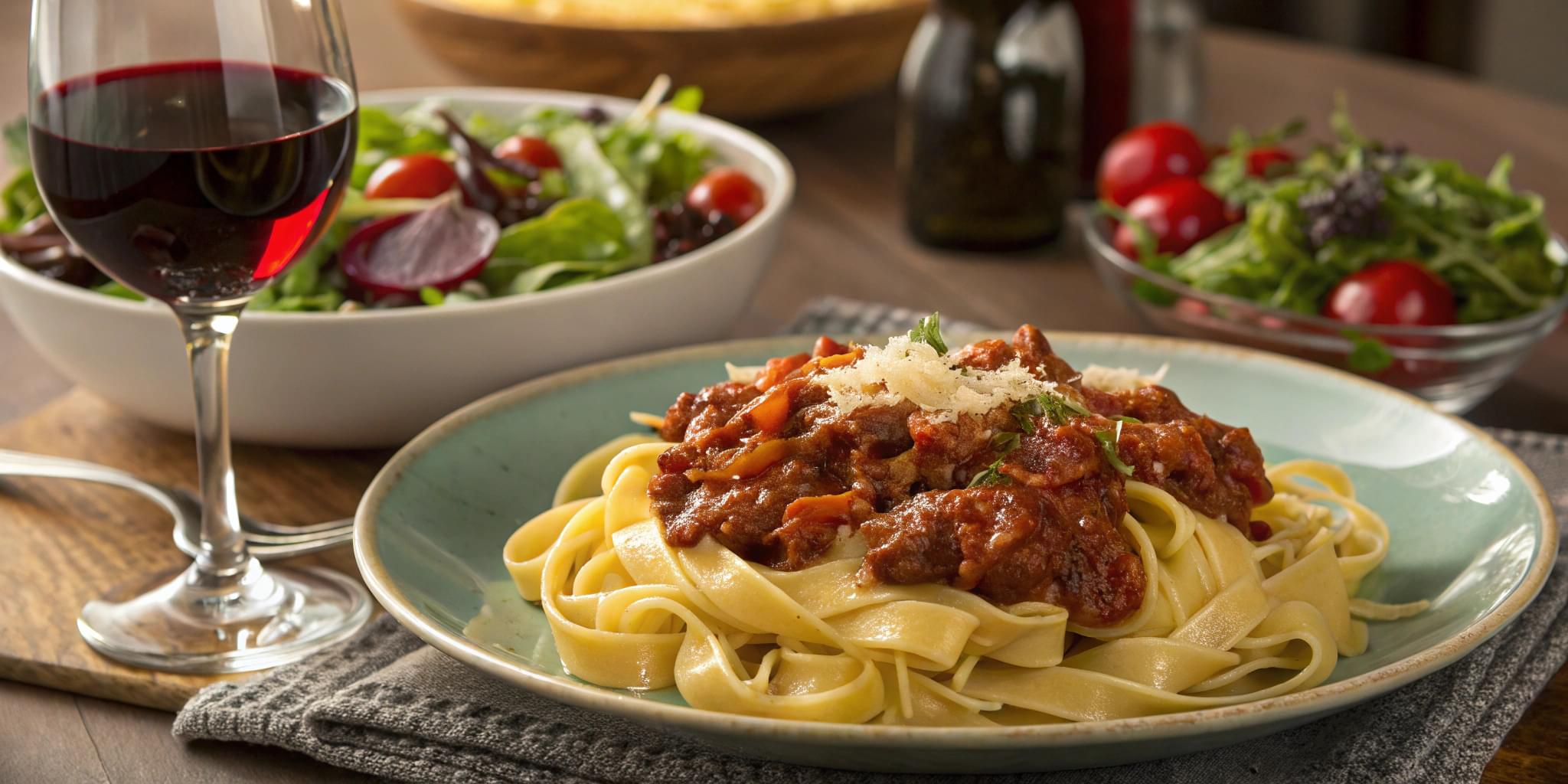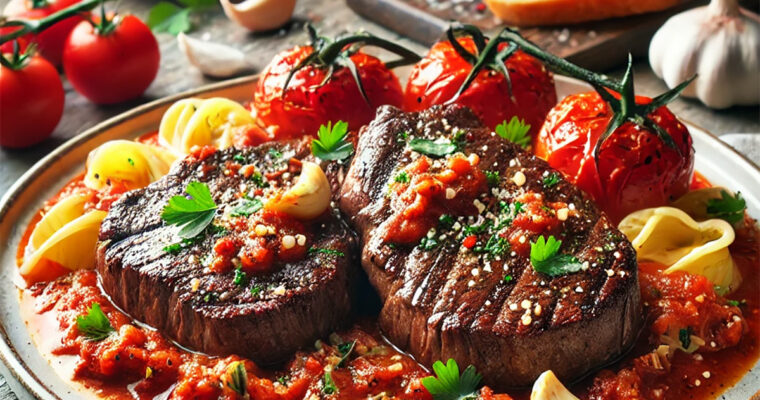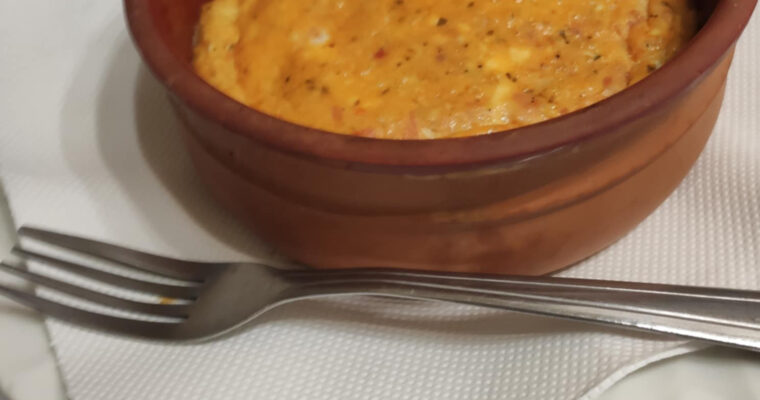Post has been updated on 3/5/2025
Discover the Elegance of Italy’s Historic Ribbon Pasta
Tagliatelle pasta, with its long, flat ribbons, is far more than a culinary staple—it’s a ribbon of Italian nobility. Originating in the heart of Emilia-Romagna, this pasta reflects centuries of history, elegance, and taste. Whether served simply or paired with rich Ragù alla Bolognese, from aristocratic feasts to modern kitchens, Tagliatelle continues to enchant with its delicate texture and versatility.
Paired with a rich sauce like traditional ragù, it transforms into a meal worthy of celebration.
A Pasta with Aristocratic and Ancient Origins
Dating back to the 15th century, Tagliatelle was born in Bologna, though its influence spread across Italy. Legend has it that this pasta was first created in honor of Lucrezia Borgia’s wedding, inspired by her golden locks. Whether or not that tale is true, the story underscores the pasta’s noble roots.
The name Tagliatelle comes from the Italian verb tagliare—to cut—since these strands are traditionally hand-cut from rolled fresh pasta sheets. Interestingly, the exact width of authentic Tagliatelle is codified in Bologna’s Chamber of Commerce: 8 mm when raw, 6.5 mm when cooked. A gold replica of the ideal Tagliatelle is even preserved there.
Historical Highlights and Fun Facts
- Tagliatelle originated in Bologna and Romagna during the Renaissance.
- A gold sample is displayed in Bologna’s Chamber of Commerce to protect its authenticity.
- The name reflects its handmade nature—cut with care from pasta sheets.
- Traditionally served with ragù alla Bolognese, not spaghetti.
- It’s a fresh egg pasta, not usually dried like spaghetti or penne.
What Sauce Goes with Tagliatelle?
Thanks to its wide, rough surface, Tagliatelle excels at clinging to hearty sauces. It works best with thick, slow-simmered ragùs. It’s no surprise that the pasta is a perfect match for Bolognese sauce, one of Italy’s most iconic meat sauces.
👉 Try my full recipe here: Homemade Ragù alla Bolognese
Other pairing suggestions include:
- Porcini mushroom and cream sauce – luxurious and earthy
- Truffle butter with sage – for an elegant twist
- Wild boar ragù – a Tuscan favorite
- Simple tomato-basil sugo – when freshness is key
- Lemon-parmesan sauce – bright and creamy
Pro Cooking Tips for Perfect Tagliatelle
Even though Tagliatelle is easy to cook, perfecting it takes a few key techniques. Try these tips:
- Use Tipo 00 flour for silky, elastic dough.
- Mix flour and eggs directly on your work surface for control.
- Knead the dough until smooth and allow it to rest for 30 minutes.
- Roll it thin—about 1 mm is ideal.
- Flour well before cutting and after, to prevent sticking.
- Cook in heavily salted water for 2–3 minutes max.
- Finish the pasta in the sauce with a bit of the pasta water.
Vegetarian Variations Worth Trying
Tagliatelle isn’t only for meat sauces. These vegetarian versions offer richness without the meat:
- Tagliatelle al Tartufo – Black truffle cream and Parmigiano
- Mushroom ragù – Made with porcini or cremini mushrooms
- Lemon-basil cream sauce – Light and aromatic
- Spinach & ricotta topping – With nutmeg and Parmesan
- Roasted cherry tomatoes and garlic oil – Bursting with flavor
Regional and Modern Variants
Traditional Tagliatelle can be found in various forms depending on the region or occasion:
- Tagliatelle Verdi – With spinach mixed into the dough
- Tagliatelle al Nero di Seppia – Tinted black with squid ink
- Whole wheat Tagliatelle – With a nuttier, rustic profile
- Vegan Tagliatelle – Made with just semolina flour and water
- Tagliolini – A thinner, lighter cousin to Tagliatelle
Frequently Asked Questions
Q: Is Tagliatelle the same as Fettuccine?
No. While similar, Tagliatelle is slightly wider and specific to northern Italy, especially Bologna. Fettuccine is more common in Rome and Lazio.
Q: Can I make Tagliatelle without a pasta machine?
Absolutely. Traditional Tagliatelle is made by hand with just a rolling pin and knife.
Q: How do I store fresh Tagliatelle?
Lightly flour the strands and allow them to dry slightly. Then store in an airtight container in the fridge for up to 2 days—or freeze them.
Bring Timeless Italian Flavor to Your Table
Tagliatelle is more than pasta—it’s a bridge to centuries of culinary tradition. When served with authentic sauces like Ragù alla Bolognese, it becomes a deeply satisfying and noble meal.
🎯 Make it today: Click here for my Homemade Ragù alla Bolognese recipe

Fresh Tagliatelle with Ragù alla Bolognese
Equipment
- Large mixing bowl or clean work surface
- Fork (for mixing eggs and flour)
- Bench scraper (optional but helpful)
- Cling film or wrap (for resting dough)
- Rolling pin or pasta machine (manual or electric)
- Sharp knife or pasta cutter
- Large pot (for boiling pasta)
- Colander or slotted spoon
- Large sauté pan (for heating and tossing with ragù)
- Tongs or pasta fork (for serving)
- Cheese grater (for Parmigiano-Reggiano)
Ingredients
For the Pasta Dough
- 2 cups 250g Tipo 00 flour (or all-purpose flour)
- 3 large eggs
- Pinch of salt
Dry Pasta if using (substitute)
- 500 g dry tagliatelle or fettuccine
To Serve
- 1 batch of Homemade Ragù alla Bolognese about 900–1000g
- Fresh Tagliatelle or dry pasta
- 50 g freshly grated Parmigiano-Reggiano about 5–7g per serving
- 15 g fresh parsley or basil finely chopped (optional)
Substitute for dry herbs
- 3 g g dried parsley or basil
Instructions
Make the Pasta Dough
- Create a mound with the flour on a clean surface. Make a well in the center and crack the eggs into it.
- Slowly whisk the eggs with a fork, gradually incorporating flour from the edges.
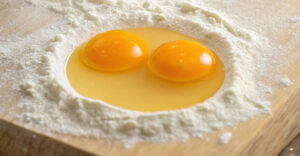
Knead and Rest
- Once it forms a rough dough, knead by hand for 8–10 minutes until smooth and elastic. Wrap in cling film and let it rest for 30 minutes at room temperature.
Roll and Cut the Pasta
- Roll out the dough to about 1 mm thickness using a rolling pin or pasta machine. Lightly flour the sheet, fold it, and slice into ribbons 6–7 mm wide.
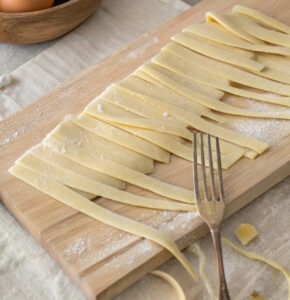
- Unfold and separate the strands. Let dry on a floured surface or pasta rack.
Cook the Pasta
- Bring a large pot of salted water to a boil.
- Cook fresh pasta for 2–3 minutes until al dente.
- If using dry pasta, cook 8–10 minutes or as per package.
Serve with Ragù
- In a large sauté pan, heat your batch of Homemade Ragù alla Bolognese.
- Transfer cooked pasta directly into the pan and gently toss to coat.
- Garnish and Serve
- Plate the pasta, sprinkle with freshly grated Parmigiano-Reggiano and chopped herbs (if using). Serve immediately
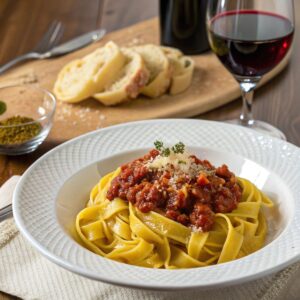
Notes
- For a vegetarian version, use a mushroom or lentil-based ragù.
- Substitute Parmigiano-Reggiano with Grana Padano for a milder taste.
- Dough can be made a day ahead and refrigerated. Bring to room temp before rolling.

